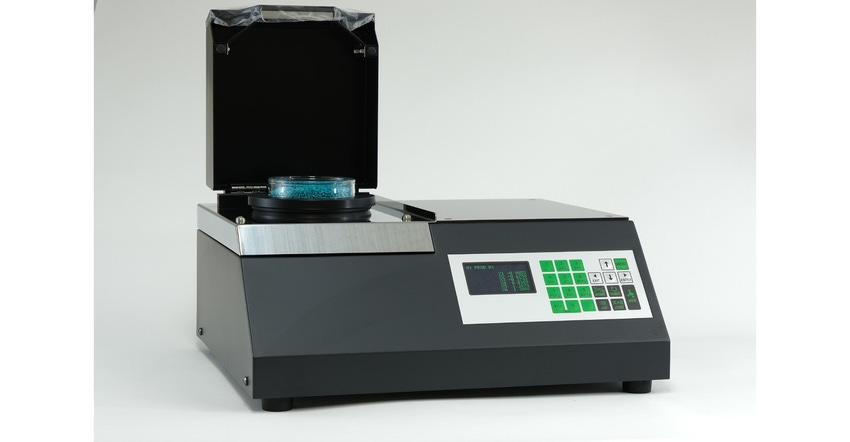Precise Instruments and Calculations are Key for Powder and Bulk Solids Safety
Partnering with an expert in moisture measurement and composition analysis can be essential to ensure the safety and performance of products and processes.
November 16, 2023

For buyers and sellers in the processing, handling, and packaging of dry particulates, the safety, quality, and efficiency of the products they bring to market cannot be left to chance with imprecise instruments or calculations. Whether manufacturing food, chemicals, polymer products, or pharmaceuticals, it is critical to utilize precise, high-quality analytical instruments that are designed to meet the specific requirements of the application and produce accurate, repeatable results.
Unfortunately, instruments are often incorrectly selected for the job, improperly calibrated, or fail prematurely, which can result in production downtime and even pose a safety risk. Even the slightest miscalculation can lead to errors and costly mistakes. A product that fails in the field could lead to an unprofitable product line or business, and even injury and death. The stakes are that high.
Inaccurate moisture measurement or composition analysis could lead to miscalculations in the creation of a new polymer, for example, resulting in a weak product that is unsafe for real-world use. It could result in failure to meet safety standards, impurities in raw materials, misjudged shelf-life, or the wrong product potency. It can also waste process time due to inefficient practices or mechanisms that do not serve the needs of the processor or manufacturer.
Partnering with an Expert
Given the importance of accurate measurement and analysis, it is becoming an industry best practice to partner with an expert that can provide not only guidance in instrument selection and calibration but also ongoing training and consultation.
Analyzer manufacturers with expertise can tailor the instrument to the specific needs of the application. The first step is research to determine the most common types of instrument usage errors in the industry in order to take corrective steps to improve overall safety and performance.
Independent Study Review
To understand the issue of industrial instrument problems in greater depth, a manufacturer of moisture and organic composition analyzers reviewed many independent studies across industries and sectors. The results indicated that facility managers encounter several types of instrument challenges.
In some cases, facility managers could not find the appropriate moisture measurement or composition analysis instruments for their specific type of production. Instead, they relied on analyzers that did not provide the required accuracy, consistency, or repeatable results.
Alternatively, some instruments failed due to abrasive wear and tear or exposure to harsh conditions. Extended exposure to salts, moisture, or chemical solvents, for example, can accelerate corrosion, breakdown, and the need for replacement.
Facilities also reported they often did not have enough support from suppliers to evaluate, install, and calibrate the instruments or train their personnel on proper operation. Errors occurred when employees improperly handled and used the instruments, particularly when they had unanswered questions.
In these kinds of situations, many manufacturers become frustrated because selecting the wrong instrument is upsetting, time-consuming, and incredibly costly.
Total Care Solution Package
Industrial manufacturers need to find a supplier of accurate moisture and organic composition analyzers that provide a total care solution package, to dramatically reduce the risks and errors related to inaccurate measurement and composition analysis. The OEM selected should have years of experience in providing a comprehensive process to identify the proper instruments, provide calibration assistance, and ongoing support for the life of the instrument.
Industrial manufacturers and processors rely on the accuracy of the instruments. That is why it is important to invest time up front to learn about the application and the industry before creating a tailored solution.
Support should come in the form of assistance with calibration curve development to ensure accurate readings, along with on-site operator training. A calibration curve is one approach to the problem of instrument calibration. The calibration curve is a plot of how the instrumental response (i.e., the analytical signal) changes with the concentration of the analyte (i.e., the substance to be measured).
The OEM should also offer performance guarantees, warranties, and guaranteed 24-hour turnaround to perform repairs or provide loaner instruments so customers can return to full operation as quickly as possible.
Because industrial settings can be harsh, the instruments need to endure the rigors of the field as well as the wear and tear of production.
The aim is to build a long-term working relationship between the customer and the OEM, including instrument selection, calibration, and ongoing support, for years or even decades to come.
ConclusionAs the need to increase production while maintaining safety and quality continues, manufacturers and processors that partner with an OEM that can provide the instruments and expertise required will have a competitive advantage in the market.
John Bogart is an expert in moisture and composition analysis and the managing director of Kett US (Villa Park, CA), a manufacturer of a full range of moisture and organic composition analyzers. For more information, call 904-604-8837 or visit www.kett.com.
You May Also Like


